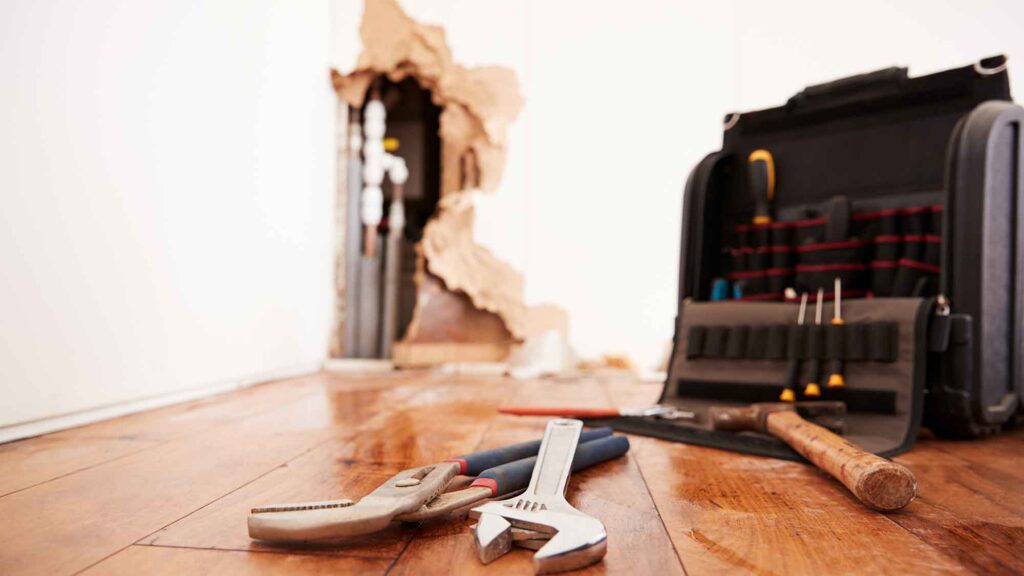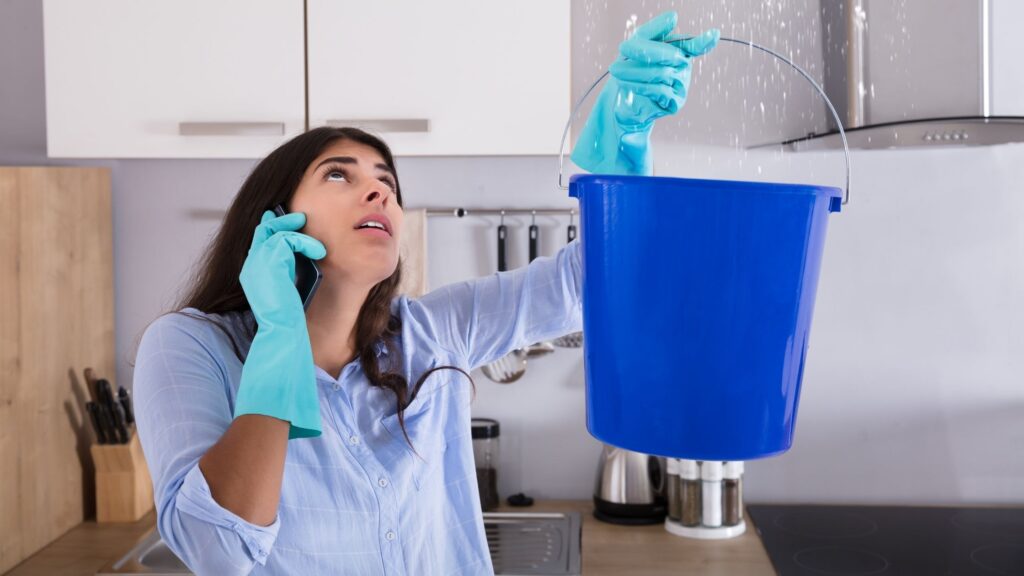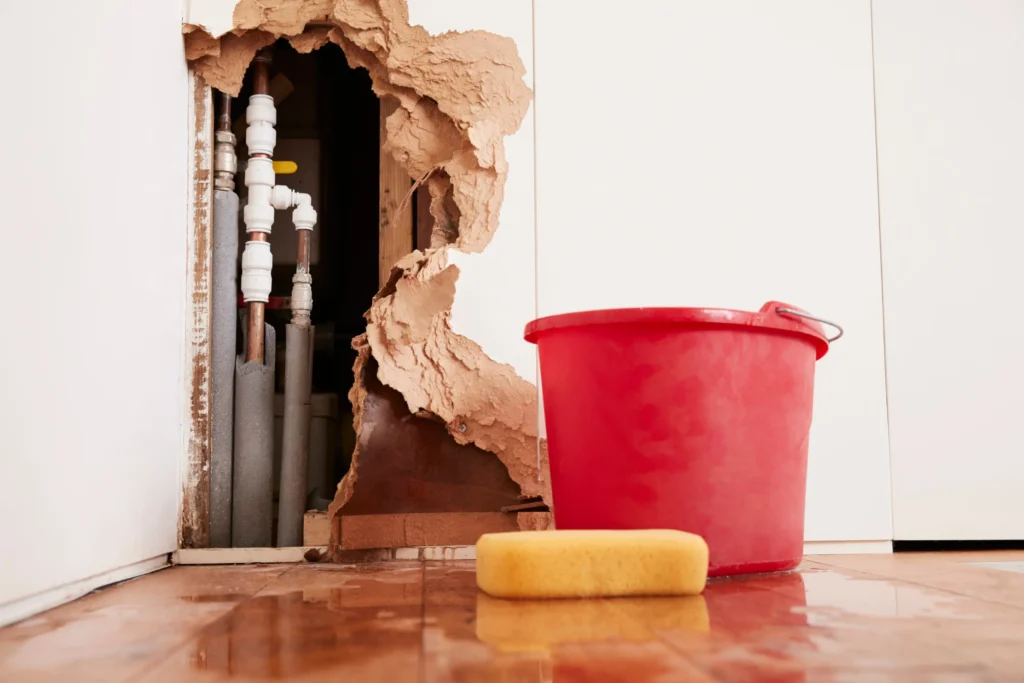
03 Sep Restoring Your Home: Water Damage Cleanup Experts
Water damage restoration is the process of returning a property to its original condition after it has experienced water damage. This damage can result from various sources, including floods, pipe bursts, sewage backups, or natural disasters. The restoration process encompasses several steps: water extraction, drying, dehumidification, cleaning, and sanitization of affected areas.
Timely action is crucial in water damage restoration to prevent further structural deterioration, mold growth, and potential health risks. Professionals in water damage restoration are trained to evaluate the extent of damage and create comprehensive restoration plans. They utilize specialized equipment such as moisture meters, dehumidifiers, and air movers to efficiently remove water and moisture from impacted areas.
These experts may also apply antimicrobial treatments to inhibit mold growth and ensure the safety of occupants. A thorough understanding of the water damage restoration process is vital for property owners and managers to effectively address water damage and minimize its consequences. The water damage restoration process is intricate and multifaceted, requiring specific expertise and equipment.
It is advisable to engage certified professionals with the necessary knowledge and experience to handle water damage effectively. By comprehending the water damage restoration process, property owners can make well-informed decisions and implement proactive measures to mitigate the impact of water damage on their properties.
Key Takeaways
- Water damage restoration involves the process of restoring a property back to its pre-loss condition after sustaining any level of water damage.
- Emergency water removal is crucial to prevent further damage to the property and to minimize the risk of mold growth and structural damage.
- Steps for flood damage repair include assessing the extent of the damage, removing standing water, drying out the affected area, and repairing or replacing damaged materials.
- Effective water damage cleanup involves using proper equipment, thoroughly drying the affected area, and disinfecting to prevent mold and bacteria growth.
- Dealing with basement water damage requires addressing the source of the water, removing standing water, and thoroughly drying out the area to prevent mold and structural damage.
- Hiring water damage cleanup experts can ensure thorough and efficient restoration, as they have the expertise and equipment to handle the job effectively.
- Preventing future water damage involves regular maintenance of plumbing and appliances, proper drainage around the property, and installing a sump pump or backup generator for emergencies.
The Importance of Emergency Water Removal
Preventing Further Damage and Health Hazards
When water enters a property, it can quickly spread and cause extensive damage to the structure and its contents. Prompt water removal is essential to prevent further damage, mold growth, and potential health hazards.
Effective Water Removal Techniques
Water damage restoration professionals are equipped to respond to emergencies and quickly remove standing water from the property. Emergency water removal involves the use of specialized equipment such as pumps, wet vacuums, and extraction tools to effectively remove water from the affected areas. The sooner water is removed from the property, the less likely it is to cause structural damage and mold growth.
Minimizing the Impact of Water Damage
Additionally, prompt water removal can help salvage personal belongings and minimize the overall impact of water damage on the property. Property owners should not underestimate the importance of emergency water removal in the event of a water damage emergency. By acting quickly and enlisting the help of professional water damage restoration experts, property owners can minimize the impact of water damage and expedite the restoration process.
Steps to Flood Damage Repair

Steps to Flood Damage Repair
Flood damage repair involves a series of steps to restore a property to its pre-loss condition after sustaining flood damage. The first step is to assess the extent of the damage and develop a comprehensive plan for flood damage repair. This may involve water extraction, drying, dehumidification, cleaning, and sanitizing the affected areas.
It is important to address flood damage promptly to prevent further structural damage, mold growth, and potential health hazards. Once the extent of the flood damage has been assessed, the next step is to remove standing water from the property using specialized equipment such as pumps, wet vacuums, and extraction tools. After water removal, the affected areas must be thoroughly dried and dehumidified to prevent mold growth and further damage.
Cleaning and sanitizing the affected areas is also crucial to ensure the safety of the property’s occupants. Flood damage repair is a complex and time-sensitive process that requires expertise and specialized equipment. It is important to work with certified professionals who have the knowledge and experience to handle flood damage effectively.
By following these steps for flood damage repair, property owners can expedite the restoration process and minimize the impact of flood damage on their property.
Tips for Effective Water Damage Cleanup
| Tip | Description |
|---|---|
| Act Quickly | Start the cleanup process as soon as possible to prevent further damage and mold growth. |
| Assess the Damage | Thoroughly inspect the affected area to determine the extent of the water damage. |
| Remove Standing Water | Use pumps or wet vacuums to remove any standing water from the area. |
| Dry Out the Area | Use dehumidifiers and fans to dry out the affected area completely. |
| Sanitize and Disinfect | Clean and disinfect the area to prevent bacteria and mold growth. |
| Dispose of Damaged Items | Properly dispose of any items that cannot be salvaged due to water damage. |
| Seek Professional Help | If the damage is extensive, consider hiring a professional water damage cleanup service. |
Effective water damage cleanup requires careful planning and execution to ensure that all affected areas are thoroughly cleaned and restored.
Here are some tips for effective water damage cleanup:
- Act quickly: Time is of the essence when it comes to water damage cleanup. The longer water sits in a property, the more damage it can cause. Prompt action can help minimize the impact of water damage and prevent further structural damage.
- Remove standing water: The first step in water damage cleanup is to remove standing water from the property using specialized equipment such as pumps, wet vacuums, and extraction tools.
- Thoroughly dry and dehumidify: After water removal, it is important to thoroughly dry and dehumidify the affected areas to prevent mold growth and further damage.
- Clean and sanitize: Cleaning and sanitizing the affected areas is crucial to ensure the safety of the property’s occupants. This may involve using antimicrobial treatments to prevent mold growth.
- Work with professionals: It is important to work with certified water damage restoration professionals who have the expertise and equipment to handle water damage cleanup effectively. By following these tips for effective water damage cleanup, property owners can minimize the impact of water damage on their property and expedite the restoration process.
Dealing with Basement Water Damage
Basement water damage can be particularly challenging to address due to its location and potential for mold growth. When dealing with basement water damage, it is important to take prompt action to prevent further damage and potential health hazards.
Here are some steps for dealing with basement water damage:
- Identify the source of the water: The first step in dealing with basement water damage is to identify the source of the water intrusion. This may be caused by factors such as heavy rain, burst pipes, or sewage backups.
- Remove standing water: Once the source of the water intrusion has been addressed, it is important to remove standing water from the basement using specialized equipment such as pumps, wet vacuums, and extraction tools.
- Thoroughly dry and dehumidify: After water removal, it is crucial to thoroughly dry and dehumidify the basement to prevent mold growth and further damage.
- Clean and sanitize: Cleaning and sanitizing the basement is essential to ensure the safety of the property’s occupants. This may involve using antimicrobial treatments to prevent mold growth.
- Address structural repairs: Depending on the extent of the basement water damage, structural repairs may be necessary to restore the basement to its pre-loss condition. Dealing with basement water damage requires careful planning and execution to ensure that all affected areas are thoroughly cleaned and restored.
By following these steps, property owners can effectively address basement water damage and minimize its impact on their property.
Hiring Water Damage Cleanup Experts

Hiring Water Damage Cleanup Experts
Benefits of Expertise
Water damage cleanup experts have the knowledge and experience to handle water damage effectively. They are trained to assess the extent of the damage and develop a comprehensive restoration plan.
Access to Specialized Equipment
Water damage cleanup experts have access to specialized equipment such as moisture meters, dehumidifiers, and air movers to effectively remove water and moisture from the affected areas.
Timely Response and Prevention of Further Damage
Water damage cleanup experts are equipped to respond to emergencies and quickly remove standing water from a property. Prompt action can help minimize the impact of water damage and prevent further structural damage. Additionally, they use antimicrobial treatments to prevent mold growth and ensure the safety of the property’s occupants.
By hiring water damage cleanup experts, property owners can expedite the restoration process and minimize the impact of water damage on their property.
Preventing Future Water Damage
Preventing future water damage is essential in maintaining the integrity of a property and ensuring the safety of its occupants. There are several proactive measures that property owners can take to prevent future water damage:
- Regular maintenance: Regular maintenance of plumbing systems, roof gutters, and downspouts can help prevent potential sources of water intrusion.
- Proper drainage: Ensuring that proper drainage systems are in place can help prevent flooding and standing water around a property.
- Inspect for leaks: Regularly inspecting for leaks in plumbing systems can help identify potential issues before they escalate into major problems.
- Install a sump pump: Installing a sump pump in basements or crawl spaces can help prevent flooding during heavy rain or snowmelt.
- Seal cracks: Sealing cracks in foundations or walls can help prevent water intrusion during heavy rain or flooding. By taking these proactive measures, property owners can minimize the risk of future water damage and ensure the long-term integrity of their property.
In conclusion, understanding water damage restoration is crucial in effectively addressing water damage emergencies and minimizing their impact on a property. Emergency water removal is essential in mitigating the impact of water damage and preventing further structural damage. Steps for flood damage repair involve assessing the extent of the damage, removing standing water, thoroughly drying and dehumidifying affected areas, cleaning and sanitizing, and addressing structural repairs if necessary.
Effective water damage cleanup requires prompt action, thorough drying and dehumidification, cleaning and sanitizing, and working with professionals who have expertise in handling water damage emergencies. Dealing with basement water damage requires identifying the source of the intrusion, removing standing water, thoroughly drying and dehumidifying, cleaning and sanitizing, and addressing any necessary structural repairs. Hiring water damage cleanup experts is crucial in ensuring that water damage is effectively addressed through their expertise, access to specialized equipment, prompt response in emergencies, and preventing mold growth.
Preventing future water damage involves regular maintenance of plumbing systems, proper drainage systems, inspecting for leaks, installing sump pumps if necessary, and sealing cracks in foundations or walls, all aimed at minimizing future risks of water intrusion on a property.
If you’re looking for more information on water damage cleanup, be sure to check out this article on waterdamage.cc. This website offers valuable tips and resources for dealing with water damage in your home or business. Whether you’re dealing with a small leak or a major flood, this article can provide you with the information you need to effectively clean up and restore your property.

Sorry, the comment form is closed at this time.